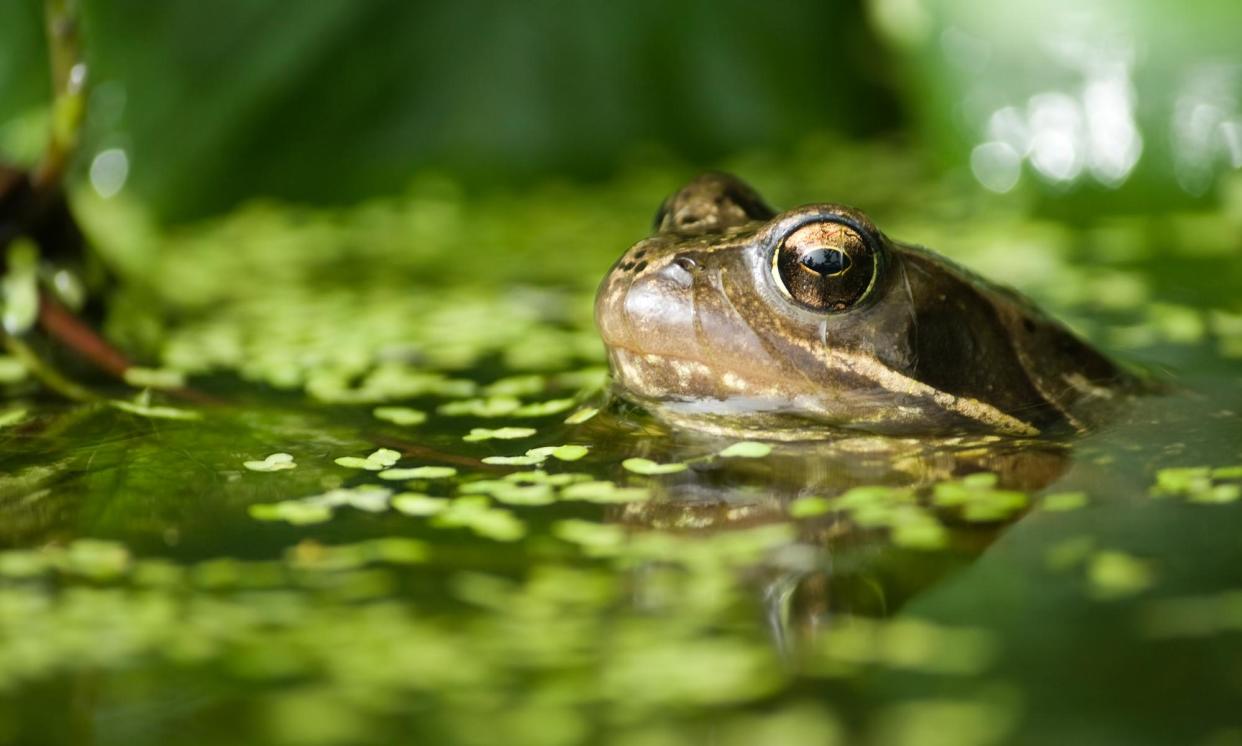Britain embraces pond life as aquatic garden plant sales boom

A pond boom is happening in Britain’s gardens as people try to halt wildlife loss by digging water sources for amphibians and other aquatic life.
Data from the Royal Horticultural Society shows a marked increase in sales of pond greenery; their online store had a 35% increase in sales of pond plants for 2023 compared with 2022.
Garden designers at Hampton Court Palace flower show have noticed the trend and many ponds are popping up among the exhibits at the show, which opens on Monday, as a result.
The floral marquee is normally home to perfectly symmetrical roses and other prize blooms, but this year they will share space with Lincolnshire Pond Plants.
Dawn Fisher, one of the company’s owners, said: “We have seen a real increase in the demand for pond plants that attract and support wildlife such as frogs, newts, dragonflies and damselflies. We’ve found that people are eager to create habitats that promote biodiversity and enhance their garden’s ecological balance.
“Creating a pond doesn’t have to be complicated. You can use a small washing up bowl and bury it in a border and only need three different plant varieties to support all manner of wildlife. Emergent plants that grow up and out of the water, like mini bulrushes, support dragonflies and damselflies; a rafting plant, like water forget-me-not, offers a platform for froglets and newts; and an oxygenating plant can prevent algae and stagnation. The great thing with ponds is that they don’t have to look weedy and overgrown, you can keep them quite neat and they’ll still attract wildlife.”
Pond plants can also stabilise the soil, prevent flooding, and filter water runoff to help keep natural waterways clean.
Tim Jennings, whose Four Season Sanctuary Garden is on display at Hampton Court, wants to show that a pond is easily incorporated into the back yard of any home. The design includes a small wildlife pond which provides drinking water for birds and attracts the insects they like to eat. It features entry and exit points for wildlife, different depths to allow for marginal plants and deeper rooting species, and is also deep enough to ensure it remains cool in hot weather.
Jennings said: “If every household with an outside space included a pond, the impact on wildlife would be immeasurable, not to mention the cooling effect they have on their immediate environment, so they are useful things to have with our increasingly hot climate. Plus, you don’t need a huge outside space to include water in your garden. With even a small pond made from an old tub, you’d be amazed by what it attracts.
“In my design, I have included flowering rush and sweet galingale, both emergent plants that allow dragonfly nymphs to climb out of the water and form their casings to turn into dragonflies. White and common ragged robins are great marginals attracting pollinators, and Dutch rush provides height for year-round interest.”
The RHS peat-free garden, designed by Arit Anderson, contains a bog pond and has a bug hotel as well as two large water butts that collect rainwater from the greenhouse, with the overflow channelled into a wildlife-friendly water feature and rain garden for future use during dry spells.
The Way of Saint James garden showcases a pond in a larger space, in the middle of a tranquil woodland. The water feature contains a multitude of aquatic plants for the pond life to enjoy.
Related: An ode to poppies: the prettiest, trickiest stars of summer gardens
Tim Upson, the RHS’s director of gardens and horticulture, said: “Making a pond will really boost the wildlife in your garden, however big or small. Birds, bees, hedgehogs all need water to drink and bathe. For maximum benefit, provide shallow areas and for bees and other insects a stone emerging from the water provides a safe landing place from which to sip the water.
“Ponds are key habitats in their own right – providing a place for frogs and toads to breed. Garden ponds are an increasingly important and safe breeding sites, and in turn they help provide natural controls in the garden. With luck, a pond will attract dragonflies. The larvae are aquatic for much of their life, before emerging as adults – it’s always exciting to see them flying around the garden. For us, a pond can be a soothing element to enjoy, along with the wealth of wildlife it will attract,” said Upson.


